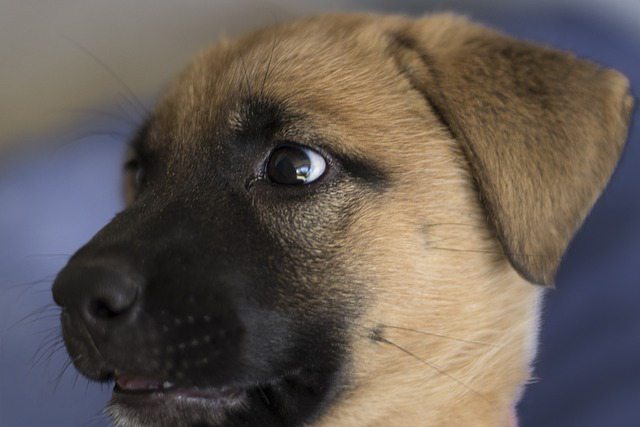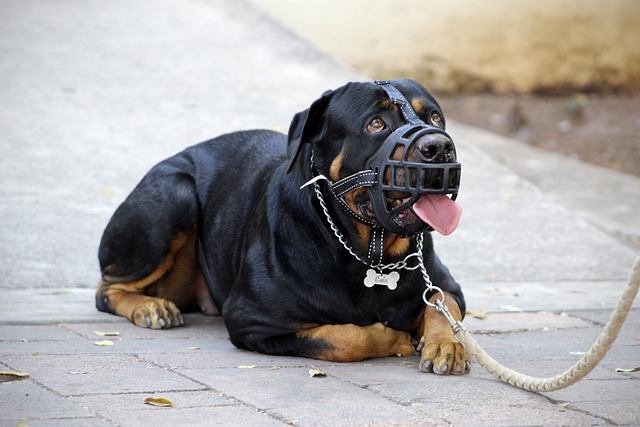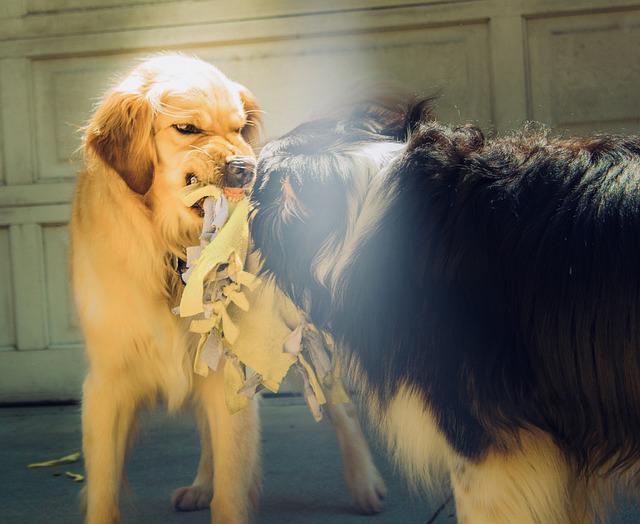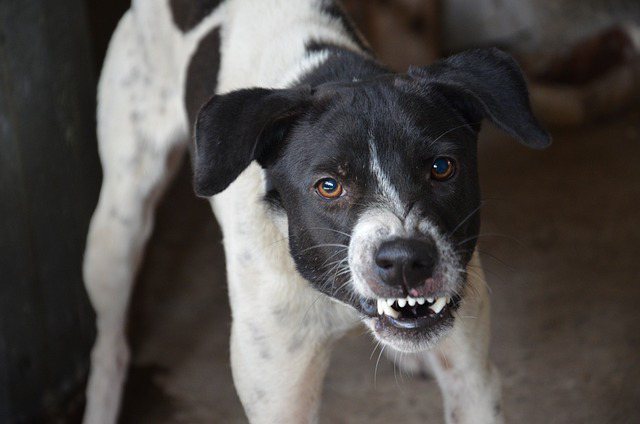Today, let’s dive into a topic that’s a bit of a tough nut to crack – aggression in dogs.
We’ve all seen those snarls and growls, but what causes it, what are the signs, and how do we address it? These are questions this post will address.
Join me as we uncover the secrets behind this behavior and learn how we can help our furry friends overcome their aggressive tendencies.
Let’s get started!
What is Aggression in Dogs?
Aggression in dogs refers to a range of behaviors that can result in harm to another individual, animal, or object.
It is often triggered by specific situations or stimuli and can manifest in various forms such as growling, baring teeth, snapping, biting, or lunging.
Aggression can be influenced by a variety of factors including genetic predisposition, early experiences, training, socialization, health issues, or environmental circumstances.
It’s important to understand that aggression is a serious behavioral issue in dogs and should be addressed with the help of a professional to ensure the safety of both the dog and those around it
Causes of Aggression in Dogs

Aggression in dogs can stem from a variety of causes. One common trigger is fear or anxiety, which can lead a dog to become defensive and react aggressively.
Another cause is resource guarding, where a dog becomes possessive over food, toys, or territory, leading to aggressive behavior when someone approaches.
Dogs that have not been properly socialized may exhibit aggression towards unfamiliar people or animals.
Medical issues, such as pain or hormonal imbalances, can also contribute to aggressive behavior.
Additionally, a dog’s genetic predisposition or breed traits can influence their tendency towards aggression.
Lastly, poor training or handling by owners can result in dogs displaying aggressive behaviors as a means of asserting dominance or lack of control.
Read more about the common causes of aggression in dogs.
Types of Aggression in Dogs
Aggression in dogs can manifest in various forms and can be caused by a combination of genetic, environmental, and learned factors.
Here are some common types of aggression observed in dogs:
1. Play aggression in dogs: Play aggression occurs when a dog becomes overly excited during play and may exhibit behaviors such as biting, growling, or rough play. It is important to differentiate play aggression from true aggression, as play aggression is usually not intended to cause harm and can be managed through appropriate training and socialization.
2. Food aggression in dogs: Food aggression, also known as resource guarding, is when a dog displays aggressive behavior when it comes to protecting its food or treats. This can include growling, snapping, or biting when someone approaches the dog while it is eating. Food aggression can be managed through behavior modification techniques and training, such as teaching the dog to associate positive experiences with people approaching its food.
3. Fear aggression in dogs: Fear aggression occurs when a dog reacts aggressively out of fear or anxiety. Dogs displaying fear aggression may exhibit defensive behaviors such as growling, barking, or biting when they feel threatened or cornered. It is important to address fear aggression through positive reinforcement training and desensitization techniques to help the dog feel more comfortable and confident in various situations.
4. Social aggression in dogs: Social aggression refers to aggressive behavior displayed by dogs towards other dogs or animals. This can include growling, lunging, or fighting when encountering other dogs. Social aggression can be managed through proper socialization, training, and behavior modification techniques.
5. Territorial aggression in dogs: Territorial aggression occurs when a dog displays aggressive behavior to protect its territory or perceived territory. Dogs exhibiting territorial aggression may bark, growl, or bite when someone or another animal enters their territory. Proper training and behavior modification techniques can help manage territorial aggression in dogs.
6. Possessive aggression in dogs: Possessive aggression, also known as resource guarding, is similar to food aggression but extends to other objects or spaces that the dog considers valuable. Dogs displaying possessive aggression may growl, snap, or bite when someone tries to take away their possessions. Behavior modification techniques and training can help manage possessive aggression in dogs.
7. Conflict aggression in dogs: Conflict aggression occurs when a dog is conflicted between two motivations and displays aggressive behavior as a result. This can happen when a dog is unsure how to respond to a situation or when it is placed in a situation where it feels threatened or stressed. Conflict aggression can be managed through behavior modification techniques and training to help the dog make appropriate choices.
8. Redirected aggression in dogs: Redirected aggression happens when a dog is unable to direct its aggression towards the source of its frustration and instead redirects it towards another target, such as a person or another animal. This can occur when a dog is restrained or unable to reach the source of its frustration. Redirected aggression should be addressed through behavior modification techniques and training to prevent further incidents.
9. Protective aggression in dogs: Protective aggression occurs when a dog displays aggressive behavior to protect its family members, property, or perceived threat. Dogs exhibiting protective aggression may bark, growl, or bite when they perceive a potential threat. Proper training, socialization, and behavior modification techniques can help manage protective aggression in dogs.
10. Predatory aggression in dogs: Predatory aggression is an instinctual behavior in dogs that is triggered by the desire to chase and capture prey. Dogs displaying predatory aggression may exhibit stalking, chasing, and biting behaviors towards smaller animals or objects that resemble prey. It is important to manage predatory aggression through training and supervision to prevent harm to other animals or people.
11. Maternal aggression in dogs: Maternal aggression occurs in female dogs who are protective of their puppies. This aggression is aimed at keeping potential threats away from the puppies and can include growling, snapping, or biting. Maternal aggression usually subsides once the puppies are weaned and can be managed through proper socialization and training.
12. Idiopathic aggression in dogs: Idiopathic aggression refers to aggression in dogs where the underlying cause cannot be determined. It is important to work with a professional behaviorist or veterinarian to assess and manage idiopathic aggression, as it may require a combination of behavior modification techniques and, in some cases, medication.
Signs of Aggression in Dogs

Aggression in dogs can manifest in various ways, and it is important to recognize the signs to ensure the safety of both humans and other animals.
Here are some of the major signs of aggression in dogs:
1. Growling: Growling is a vocalization that dogs use to communicate their discomfort or aggression. It is a warning sign that should not be ignored. Dogs may growl when they feel threatened, scared, or want to protect their resources, such as food or toys. It is important to pay attention to the context in which the growling occurs and take appropriate action to avoid escalation.
2. Barking: Excessive or intense barking can be a sign of aggression, especially if it is accompanied by other aggressive behaviors. Dogs may bark to warn others to stay away, establish dominance, or express frustration. It is important to assess the situation and address the underlying cause of the barking to prevent potential aggression.
3. Snapping: Snapping is a quick, sudden movement of the jaws without making contact. It is a warning sign that a dog may bite if the threat persists. Snapping is often accompanied by other aggressive body language, such as growling, raised hackles, or a stiff body posture. Dogs may snap when they feel threatened, cornered, or if they are in pain. It is crucial to give the dog space and avoid further provocation.
4. Biting: Biting is the most obvious and dangerous sign of aggression. It can cause serious harm and should be taken seriously. Dogs may bite when they feel threatened, or fearful, or when they are protecting themselves, their territory, or their family. It is essential to seek professional help if a dog has a history of biting or displays aggressive behavior.
5. Lunging: Lunging is when a dog suddenly moves forward aggressively, often accompanied by barking or growling. It is a clear sign of aggression and a potential attack. Dogs may lunge when they perceive a threat or want to establish dominance. It is crucial to maintain a safe distance and avoid direct confrontation with a dog displaying this behavior.
6. Showing teeth: Dogs may bare their teeth as a warning sign of aggression. This is often accompanied by other aggressive body language, such as raised hackles or a stiff posture. When a dog shows its teeth, it signals that it is uncomfortable, anxious, or ready to defend itself. It is important to respect the dog’s boundaries and avoid any further actions that may provoke aggression.
7. Stiff body posture: When a dog’s body becomes stiff and rigid, it is a sign of heightened aggression. The dog may freeze in this position before attacking. A stiff body posture indicates that the dog is ready to defend itself or its territory. It is crucial to move away slowly and avoid any sudden movements that may trigger an aggressive response.
8. Raised hackles: The hackles are the hairs along a dog’s back. When they are raised, it indicates that the dog is aroused and potentially aggressive. Raised hackles are a visible sign of a dog’s heightened state of alertness or agitation. It is important to give the dog space and avoid actions that may escalate the situation.
9. Intense eye contact: Dogs may stare intensely at a person or another animal when they are feeling aggressive. This can be a warning sign before other aggressive behaviors occur. Intense eye contact is a way for dogs to assert dominance or communicate a threat. It is important to avoid prolonged eye contact with an aggressive dog and give it space to de-escalate the situation.
Remember, it is crucial to approach and handle aggressive dogs with caution. Understanding the signs of aggression is the first step toward preventing potential attacks and ensuring the safety of everyone involved.
If you witness any of these signs in a dog, it is recommended to consult with a professional dog behaviorist or trainer for guidance and assistance in addressing the aggression.
Read a more detailed article about the warning signs of aggression in dogs.
Addressing and Managing Aggressive in Dogs

Aggressive behavior in dogs can be concerning and challenging to manage. Here are some effective ways to address and manage aggressive behavior in dogs:
1. Identify the Triggers: Aggressive behavior in dogs can be triggered by various factors such as fear, territoriality, resource guarding, or frustration. By identifying the specific triggers that cause aggression in your dog, you can take steps to avoid or manage those situations. For example, if your dog becomes aggressive around other dogs, you can limit their interactions or provide training to help them become more comfortable in those situations.
2. Positive Reinforcement Training: Positive reinforcement training is a highly effective method for addressing aggressive behavior in dogs. This training technique involves rewarding desirable behaviors with treats, praise, or play, which helps reinforce positive behavior and reduces the likelihood of aggression. By focusing on rewarding good behavior instead of punishing undesirable behavior, you can create a positive and trusting relationship with your dog.
3. Socialization: Proper socialization plays a crucial role in reducing aggression in dogs. Exposing your dog to various people, animals, and environments in a controlled and positive manner helps them become accustomed to different situations. Gradual and positive socialization experiences can teach your dog appropriate behavior, improve their confidence, and reduce fear-based aggression. It is important to start socialization at a young age and continue throughout their life.
4. Management Techniques: Implementing management techniques can help prevent situations that trigger aggression in your dog. For example, using a muzzle or a leash in public places can ensure the safety of other people and animals while allowing you to have better control over your dog’s behavior. Creating a safe and quiet space at home where your dog can retreat when feeling overwhelmed can also help manage their aggression.
5. Consistency and Structure: Dogs thrive on consistency and structure. Establishing clear rules and boundaries for your dog and ensuring that all family members and visitors follow them consistently is essential. Inconsistency can confuse dogs and lead to increased anxiety and aggression. By providing a structured environment, you can help your dog feel secure and understand what is expected of them.
6. Exercise and Mental Stimulation: Regular exercise and mental stimulation are vital for a dog’s overall well-being and can significantly reduce aggression. Engaging your dog in daily physical activities such as walks, runs, or playing fetch helps release excess energy and promotes relaxation. Mental stimulation through training sessions, puzzle toys, or scent work exercises can redirect your dog’s focus and provide a healthy outlet for their energy.
7. Health Check-up: It is essential to ensure that your dog is in good physical health as underlying medical issues can contribute to aggressive behavior. Pain, discomfort, or hormonal imbalances can cause dogs to act out aggressively. Regular veterinary check-ups can help identify and address any health problems that may be influencing your dog’s behavior.
8. Avoid Punishment:
Punishment-based training methods can escalate aggression and lead to negative consequences. Instead of punishing your dog for displaying aggressive behavior, focus on positive reinforcement to encourage wanted behaviors. Punishment can create fear and anxiety, exacerbating aggression. By rewarding and reinforcing good behavior, you can redirect your dog’s focus and gradually replace aggressive tendencies with more desirable behaviors.
9. Consult a Professional: Seeking professional help from a certified dog trainer or animal behaviorist is highly recommended when dealing with aggressive behavior in dogs. These professionals have the expertise to assess the situation, determine the underlying causes of aggression, and develop a customized behavior modification plan for your dog. They can guide you through the training process and provide support along the way.
10. Patience and Time: Addressing and managing aggressive behavior in dogs takes time and patience. It is crucial to remain calm and consistent throughout the process. Progress may not happen overnight, and setbacks can occur. Celebrate small victories along the way and be prepared to adjust your approach as needed. Seek professional guidance when necessary to ensure you are taking the appropriate steps to address your dog’s aggression.
Remember, each dog is unique, and what works for one may not work for another. It is important to tailor your approach based on your dog’s individual needs and consult with professionals for personalized guidance.
With patience, understanding, and the right training techniques, many dogs can overcome their aggressive behavior and become well-adjusted companions.
Read more about calming and stopping aggression in dogs.
How to Prevent Aggression in Dogs

Preventing aggression in dogs requires a multi-faceted approach. First, ensure proper socialization from a young age, exposing them to various people, animals, and environments.
Second, provide consistent and positive reinforcement training, focusing on commands such as “sit,” “stay,” and “leave it.”
Third, establish clear boundaries and rules within the household, avoiding any dominance-based techniques.
Fourth, provide mental and physical stimulation through regular exercise, interactive toys, and puzzle games.
Fifth, neutering or spaying can reduce aggression caused by hormonal imbalances.
Lastly, consult with a professional dog trainer or behaviorist if aggression issues persist, as they can offer specialized guidance and support.
Read a more detailed article about preventing aggression in dogs.
Conclusion
In a world where dogs bring us so much joy and love, it’s important to address the issue of aggression with compassion and understanding. By recognizing the signs, seeking professional help, and implementing positive training techniques, we can help our furry friends overcome their challenges and build a harmonious bond. Remember, every dog deserves a chance to be their best, and together, we can create a safer and happier environment for both pets and their humans.

